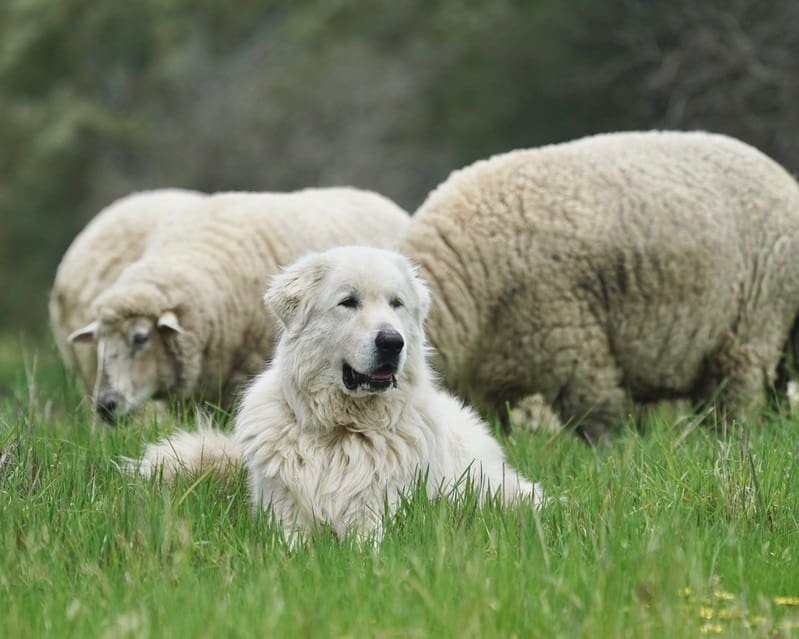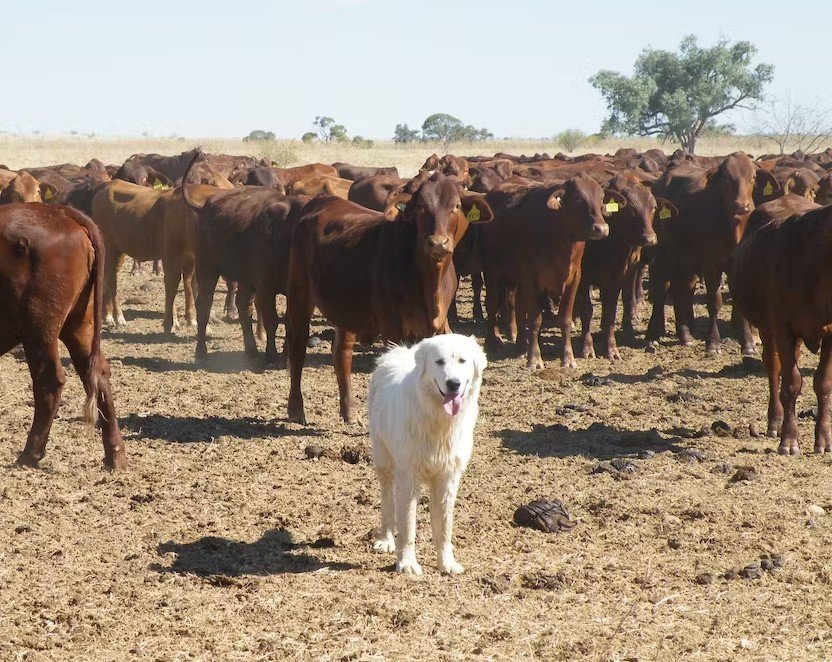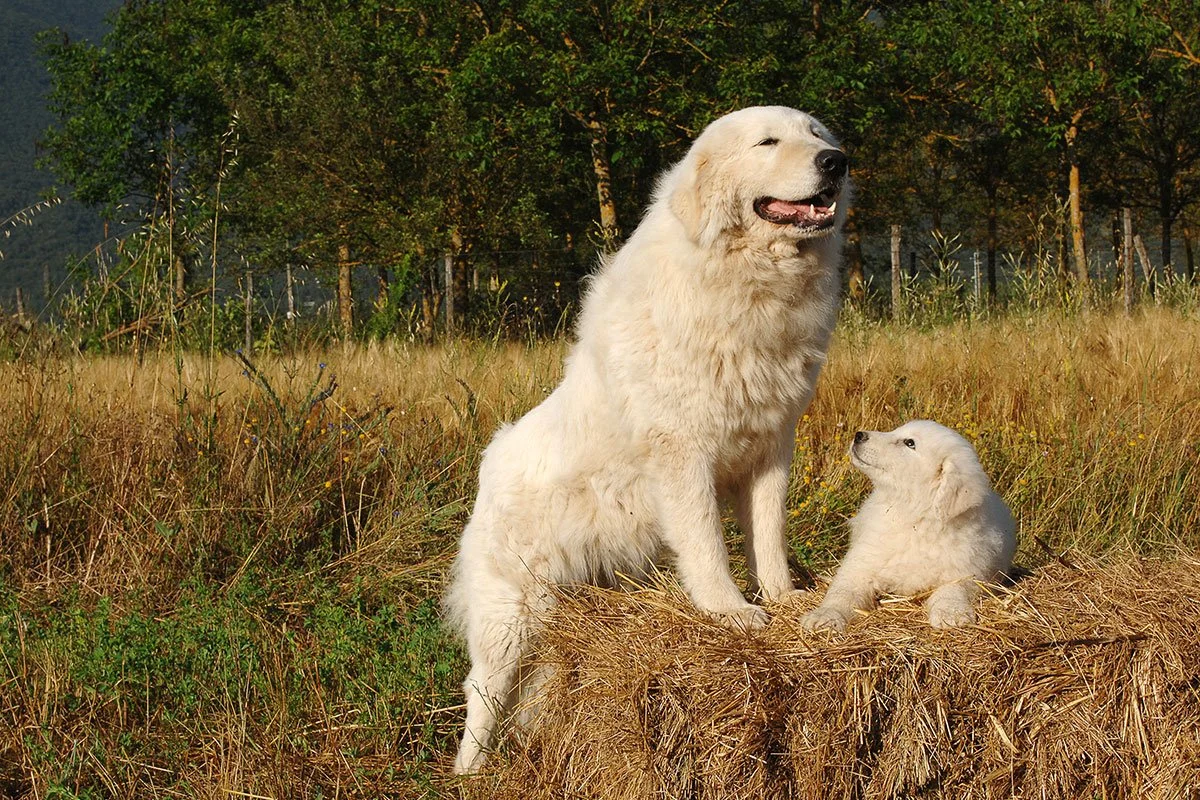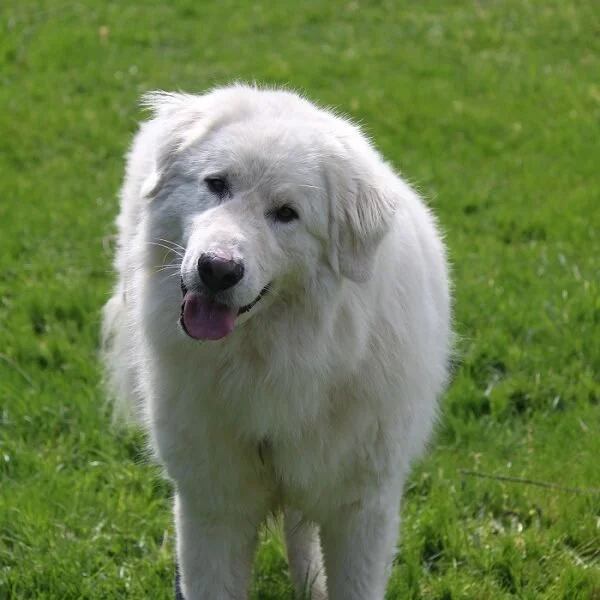
Non-lethal management:
Livestock Guardian Dogs
An effective tool to protect livestock
The use of guardian dogs to protect livestock is increasing in popularity across Australia. Its success has been proven through research conducted by the Queensland Government Department of Agriculture and Fisheries.
Guardian dogs are medium to large breeds, weighing between 35 and 55kg, that live alongside livestock animals to protect them from predation. Guardian breeds of dog originated in Europe and Asia, where they have been used to guard livestock flocks from bears and wolves for centuries.
Livestock guardian dogs (LGDs) tend to be larger than dingoes, which can act to intimidate and deter them from livestock. Their effectiveness to guard livestock depends on breeding, training and bonding with livestock animals.
The most popular LGD in Australia is the Maremma Sheepdog. Other breeds available in Australia include Pyrenean Mountain Dog, Anatolian Shepherd and Kangal, Central Asian Ovcharka, Sarplaninac, Pyrenean Mastiff, Kuvasz, Komondor, Tibetan Mastiff and Spanish Mastiff.
Proven success around the globe
LGDs have been found to successfully protect livestock in a variety of circumstances. In the context of Australia, they have successfully protected:
Small herds of goats
Sheep
Deer
Alpaca
Free-range fowl
Numerous large-scale sheep properties
Internationally, LGDs have proven successful in protecting domestic livestock from:
Wolves
Bears
Mountain lions
Birds of prey
Coyotes
Cheetars
Leopards

Maximising the effectiveness of LGDs
Ensuring reputable and reliable breeding
The effectiveness of LGDs to protect livestock can depend largely on their breeding. Healthy LGDs come from breeders who ensure their breeding animals are tested and free from any known health issues, particularly those relating to the breed. They provide a high standard of living and care for all of their dogs and ensure they are fed a nutritious and balanced diet. They provide continued support and guidance to new owners.
Other traits to look out for to ensure a breeder is reliable includes providing references upon request, being open to questions, providing a full history on the puppy, as well as providing a guarantee.
Determining the correct ratio of LGDs you need to protect your livestock
There are a variety of factors that must be considered when deciding the number of LGDs needed to protect your livestock animals. This includes the size of the main predator you are concerned about, the number of predators present in the area, the number and type of livestock needing protection and the size and topography of your property.
Experienced and reliable breeders should be able to provide advice on the number of dogs required based on the needs of your property.
Proper training of LGDs
The bonding, training and handling of LGD can have an impact on how effective they are at protecting livestock animals. It is a worthwhile investment to properly train a LGD puppy to ensure they become successful guardians.
Those seeking a guardian dog have the option of choosing a pup or a pre-trained mature dog. Mature, pre-trained guardian dogs can be a faster means to protect livestock from predation than getting a pup. It generally takes between 12 and 24 months before pups become reliable livestock guardians. Pre-trained dogs can be advantageous to those who have never had a LGD before and are unsure on proper training, removing the risk of poor training of a pup. The advantage of getting a pup is having full control over the bonding process and ensuring the guardian dogs are trained to handle the specific circumstances of a property.
Bonding pups with livestock
Between 8-16 weeks of age is the most important time for LGDs to bond with livestock, and is referred to as the ‘crucial period’ of socialisation. During this time behaviour such as submission, dominance and food-begging emerge. These make up the foundation of complex social behaviours of adults. At the conclusion of this period in the life-cycle it becomes much more difficult to develop or alter the LGDs social skills.
During this critical period pups should be kept in a pen with the livestock they are tasked with guarding to ensure they bond to them. The pen should be escape-proof for when the pup arrives. Avoid bringing the pup into the house.
The pen should provide adequate shelter to protect the LGD pup from the elements, as well as a feeding and watering station. It is important that the pen incorporates a retreat area that the LGD can access but livestock cannot. Such retreats can be made using fence panels. This area is also suitable for feeding the pup separately, preventing the risk of the livestock eating the pup's food. Whilst LGDs need to be fed twice daily, limiting handling is advised.
Comprehensive details on training LGD can be found here:
Best Practice Manual for the use of Livestock Guardian Dogs pestsmart.org.au/wp-content/uploads/sites/3/2020/06/Guardian-Dogs-web.pdf
Working lifespan and cost of LGD
Most guardian dogs have a working lifespan of 10-12 years, depending on their breed. Some dogs may slow down or develop health issues in their older years, however most prefer to remain guarding livestock. If there are concerns that older animals provide less protection to livestock, a possible solution is to add a younger LGD and they can work together.
LGDs generally requires less financial and time investment than other forms of predator control. The cost of keeping a LGD is usually fully offset by the value of the livestock they save between one and three years of working effectively.
Costs associated with LGD
Initial costs
Ongoing costs
Things to consider when deciding to get a guardian dog to protect your livestock:
Guardian dogs require good quality care to ensure they work effectively. This includes a nutritious diet, access to clean water, regular treatment to protect them from fleas, ticks and worms and access to shelter to protect them from the elements.
It is important to ensure LGDs are desexed to prevent them from breeding with other dogs or dingoes. Desexing can help to reduce the likelihood of roaming behaviours.
It is important to speak to neighbouring properties about guardian animals especially if they use lethal control methods such as poison baiting. This can place LGDs at risk, especially if roaming behaviours are not discouraged.
It is imperative that correct training and bonding is undertaken to ensure the success of LGDs, otherwise they are at risk of displaying undesirable behaviours and failing to protect livestock effectively.








